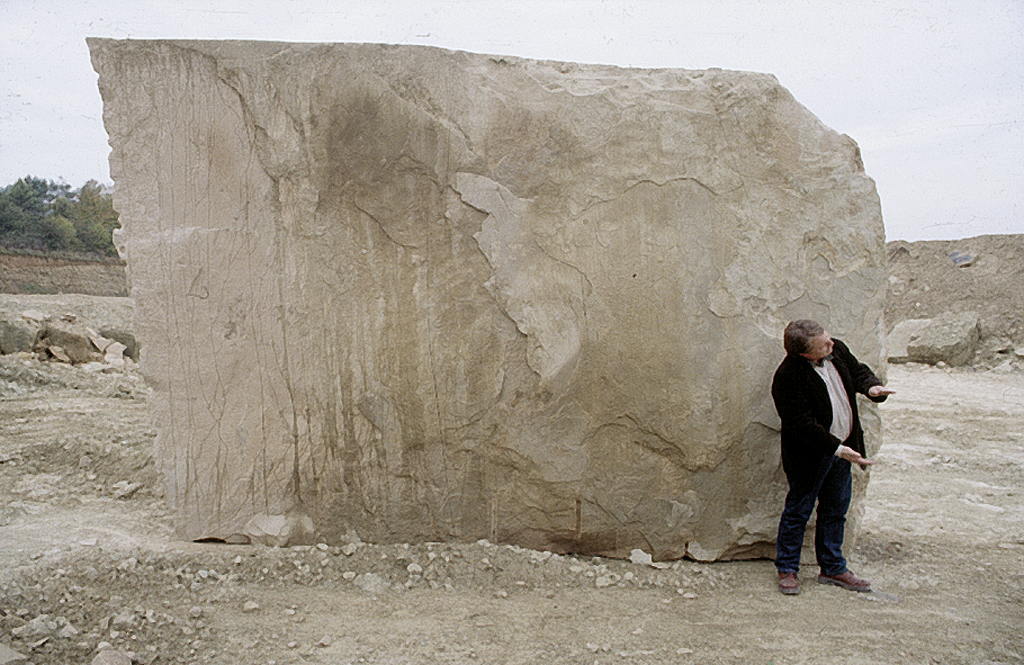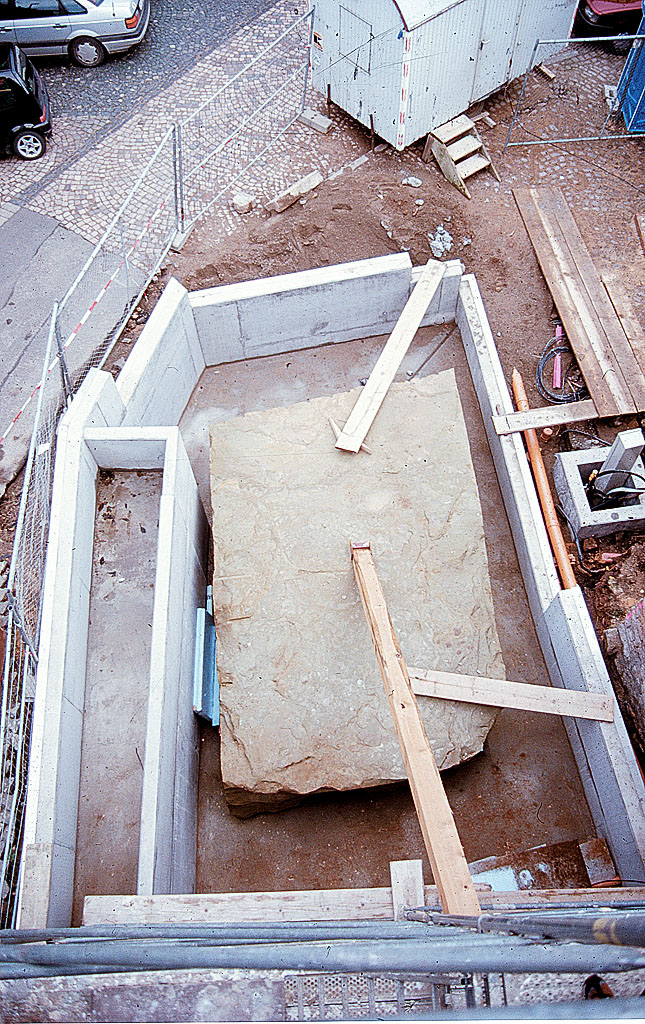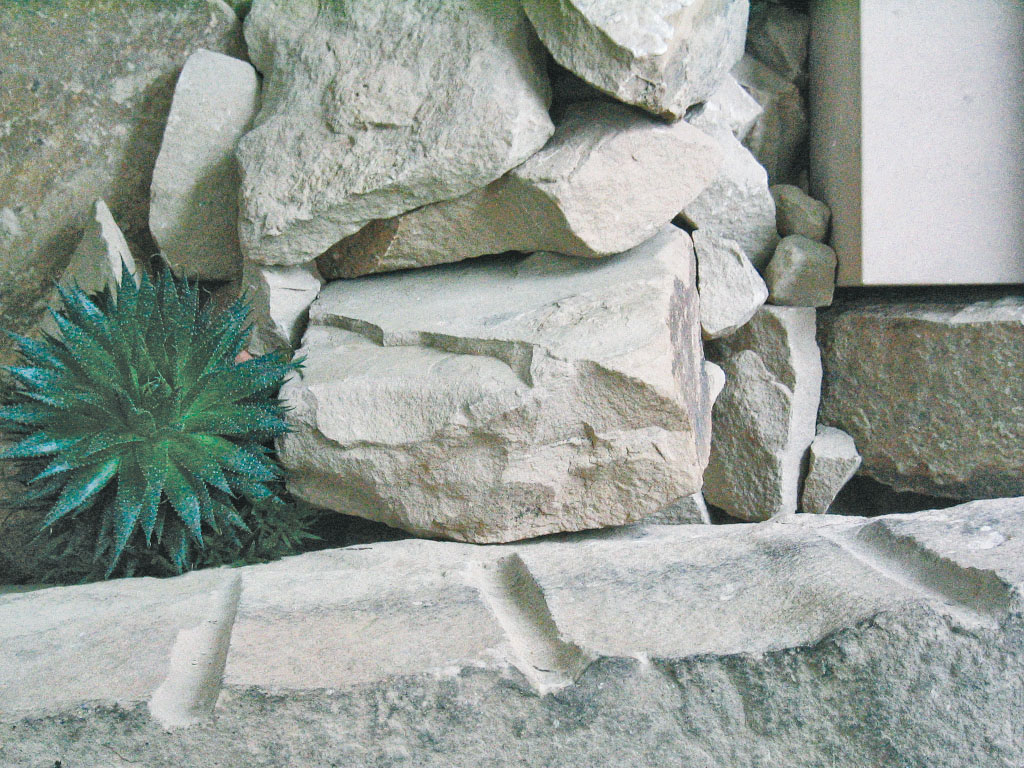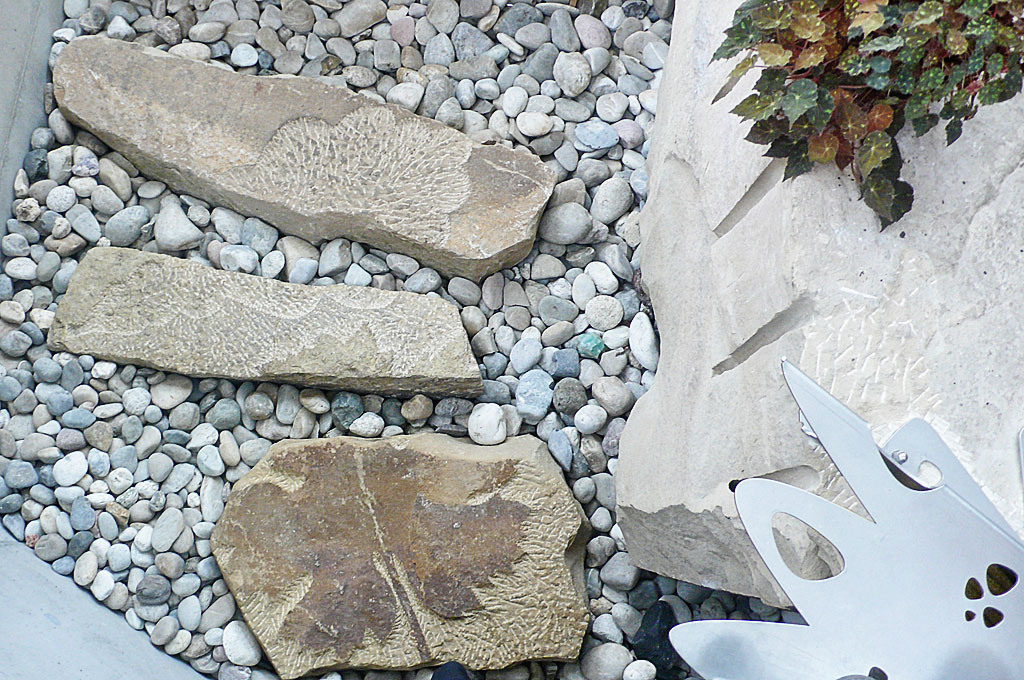 Adam’s house in Paradise, Laugier’s primitive hut, Violett-Le-Duc’s dome of tree branches, all are based upon the premise that architecture came into being as an interpretation of nature as landscape and consequently, as a representation of evolution through man. Uniquely, living room represents nature simply as a gravitational plane(t) on which we stand. The floor is gravel, basalt, boulders, a dry-river-bed, within which rests the dense, dark yellow sandstone rock, 4x6 m x 1.5m that weighs 42 tons. It includes insertions, small shellfish, and subtle waveforms. Its solidity addresses the paradox of the indoor landscape: sedimented in antecedents, “fluid” before, quarried and trucked here. It anchors the house, inferring horizontality and permanence, within a perforate boundary of shelter and sky.
Adam’s house in Paradise, Laugier’s primitive hut, Violett-Le-Duc’s dome of tree branches, all are based upon the premise that architecture came into being as an interpretation of nature as landscape and consequently, as a representation of evolution through man. Uniquely, living room represents nature simply as a gravitational plane(t) on which we stand. The floor is gravel, basalt, boulders, a dry-river-bed, within which rests the dense, dark yellow sandstone rock, 4x6 m x 1.5m that weighs 42 tons. It includes insertions, small shellfish, and subtle waveforms. Its solidity addresses the paradox of the indoor landscape: sedimented in antecedents, “fluid” before, quarried and trucked here. It anchors the house, inferring horizontality and permanence, within a perforate boundary of shelter and sky.

Artistically we found indoor landscape effective as soon as we dispensed with the organic and adopted the mineral, raw and tooled from the quarry, and with traces of weathering and death from its journey through the millennia. Without life, nature’s intrinsic moral authority diminishes. The brutal solid coexists in equilibrium with the whimsy objects of architecture and the arts.


